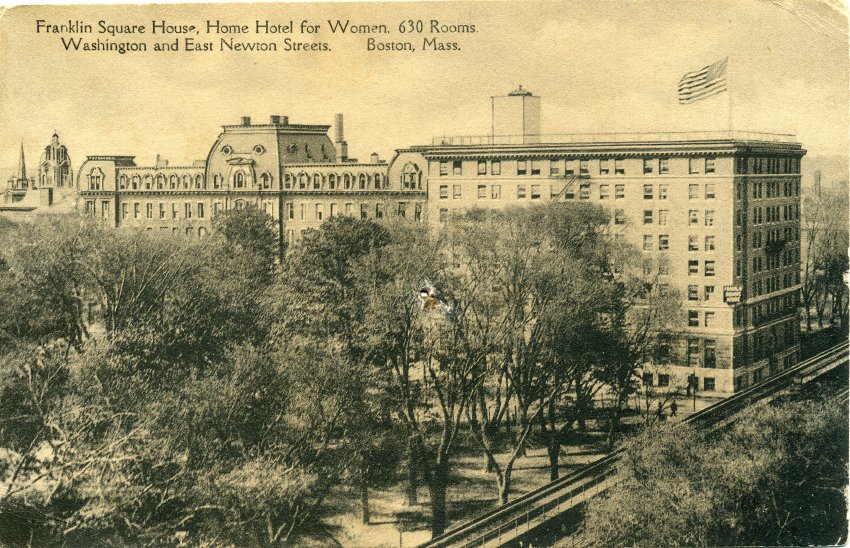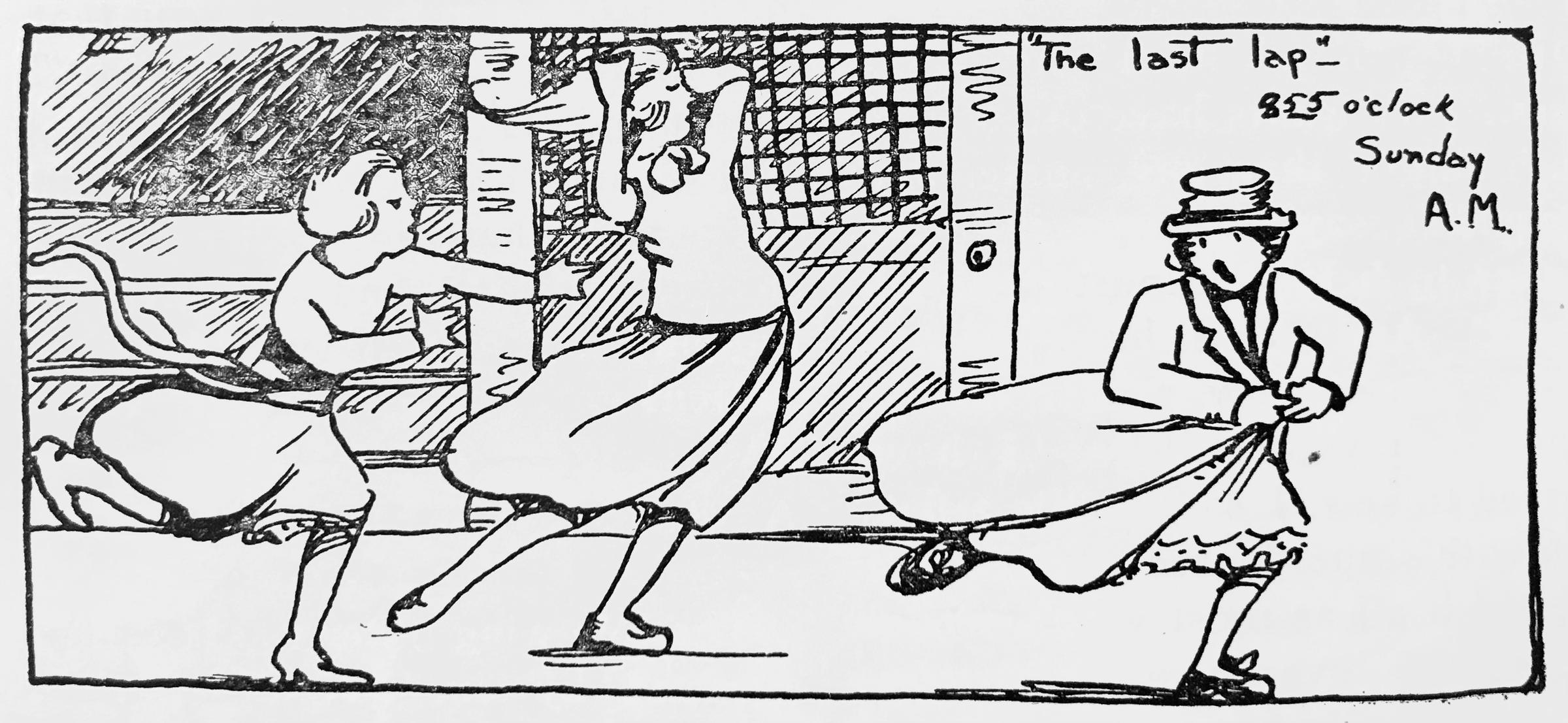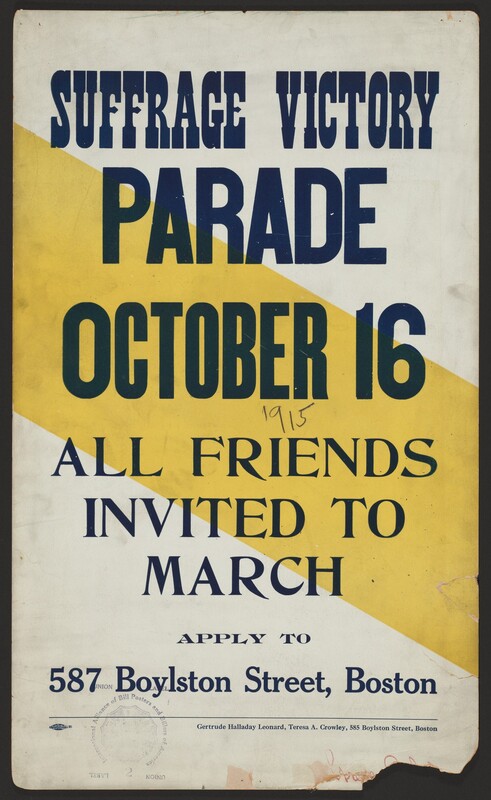The South End’s Franklin Square House: Working Women Claim the Vote in 1920
For decades, wage-earning women and female students called the Franklin Square House in Boston’s South End home. In 1920, over a hundred of these residents claimed their new right to register to vote.
It was “the largest hotel for young working women and girl students in the world,” claimed The New York Times in 1913. Located at 11 East Newton Street in Boston’s South End, the Franklin Square House was an affordable home for single women until the late 1900s. When the Nineteenth Amendment passed in 1920 granting many women in America the right to vote, the Franklin Square House could hold up to 850 residents. A digital initiative by the Boston City Archives to transcribe women’s voter registrations has revealed that over one hundred women living in the house registered to vote that fall, just in time to cast their ballots in the 1920 presidential election.
When Universalist pastor Reverend George Perin founded the Franklin Square House in 1902, his vision was “to provide a home for working girls at moderate cost.” The Franklin Square House met this need with low rents and progressive features, including in-house health care, evening classes, dining services, a library, entertainment halls, sports teams, and an advisory council of residents.
While Perin did intend for the Franklin Square House to be a safe haven for all who needed it, it is unclear how many residents were women of color in the house’s early years. According to the Cambridge Chronicle, Black educator, suffragist, and civil rights activist Maria L. Baldwin faced racist opposition from some Franklin Square House residents when she moved into a room in 1905. However, she was supported by the house’s superintendent and was still living there when she registered to vote fifteen years later. The house’s community held a wide range of social and political views.
Many Franklin Square House residents had been supporting women’s suffrage for years. In the 1915 Woman Suffrage Parade in Boston, over 8,000 women marched to support a ballot measure granting voting rights to Massachusetts women. About 300 residents of the Franklin Square House joined the march, and the house’s brand-new electric sign was illuminated for the event.
While the 1915 measure failed, Franklin Square House women were eager to sign their names to the registration books when the Nineteenth Amendment successfully passed. Among the hundred-plus residents who claimed their voting rights in the fall of 1920 were Mabel S. Worcester, the “hostess” or head manager of the house; Jane C. Champlin, who ran the house’s “Gray Goose Shop and Tea Room”; and Maria L. Baldwin. Jordan Marsh department store clerk Jennie L. Parker registered just a few months after her 21st birthday, narrowly meeting the minimum voting age required at the time. Widow Martha McKie registered at age 86.
In 1970, the building was sold to the City of Boston and eventually became the Franklin Square Apartments. Today, the legacy of Perin’s community of Boston working women is the Franklin Square House Foundation, which provides grants for affordable housing services for women and families.
The voting registers are full of the stories of clerks, nurses, students, teachers, dental hygienists, activists, hairdressers, and bookkeepers who all called the Franklin Square House home. Many more stories of women across Boston await discovery in the transcribed voter registrations of the Mary Eliza Project.
Further Reading:
Franklin Square House Foundation
Franklin Square House Records, 1882-2012. 2012-M132. Schlesinger Library, Radcliffe Institute, Harvard University, Cambridge, Mass.
Hinchliffe, Beth and Bonnie Hurd Smith. The House That Love Built: The History of the Franklin Square House. Franklin Square House Foundation, 2012.
Asserting Black Women’s Right to Vote: Maria L. Baldwin in 1920, Boston City Archives
Erin Wiebe is a dual degree graduate student in History and Archives Management at Simmons University.





